-
 Bamboo is one of the fastest-growing woody plants on earth, reaching hundreds of feet just months after harvesting. This unbridled regeneration makes bamboo a natural, renewable choice for an architectural veneer. Colors range from creamy-yellow to warm amber; the grain is straight with distinctive knot-like markings characteristic of the species. Available in light or dark tone, offerings with narrow or wide stripe patterns. Learn About Veneer Cut & Matching
Bamboo is one of the fastest-growing woody plants on earth, reaching hundreds of feet just months after harvesting. This unbridled regeneration makes bamboo a natural, renewable choice for an architectural veneer. Colors range from creamy-yellow to warm amber; the grain is straight with distinctive knot-like markings characteristic of the species. Available in light or dark tone, offerings with narrow or wide stripe patterns. Learn About Veneer Cut & Matching -
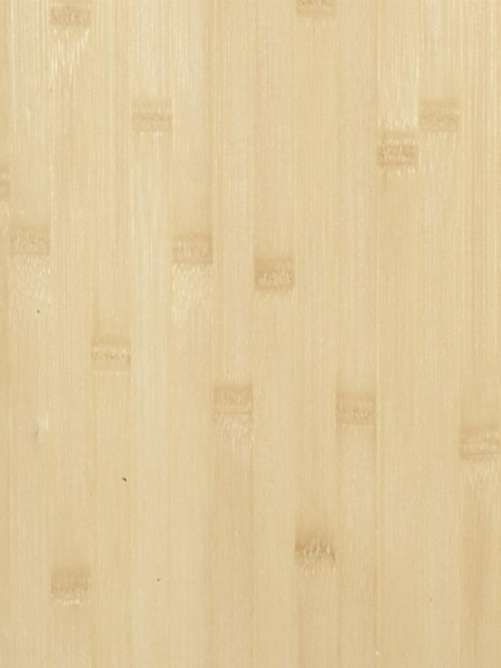 Bamboo is one of the fastest-growing woody plants on earth, reaching hundreds of feet just months after harvesting. This unbridled regeneration makes bamboo a natural, renewable choice for an architectural veneer. Colors range from creamy-yellow to warm amber; the grain is straight with distinctive knot-like markings characteristic of the species. Available in light or dark tone, offerings with narrow or wide stripe patterns. Learn About Veneer Cut & Matching
Bamboo is one of the fastest-growing woody plants on earth, reaching hundreds of feet just months after harvesting. This unbridled regeneration makes bamboo a natural, renewable choice for an architectural veneer. Colors range from creamy-yellow to warm amber; the grain is straight with distinctive knot-like markings characteristic of the species. Available in light or dark tone, offerings with narrow or wide stripe patterns. Learn About Veneer Cut & Matching -
 Considered among the best veneers in the poplar family, aspen ranges in color from almost pure white to light straw to warm tan. Favored logs produce a lovely, bright veneer with a beautiful, natural sheen. Aspen is often fumed to a rich, dark brown for use in modern environments. It mixes beautifully with stone and other materials in natural environments. Learn About Veneer Cut & Matching
Considered among the best veneers in the poplar family, aspen ranges in color from almost pure white to light straw to warm tan. Favored logs produce a lovely, bright veneer with a beautiful, natural sheen. Aspen is often fumed to a rich, dark brown for use in modern environments. It mixes beautifully with stone and other materials in natural environments. Learn About Veneer Cut & Matching -
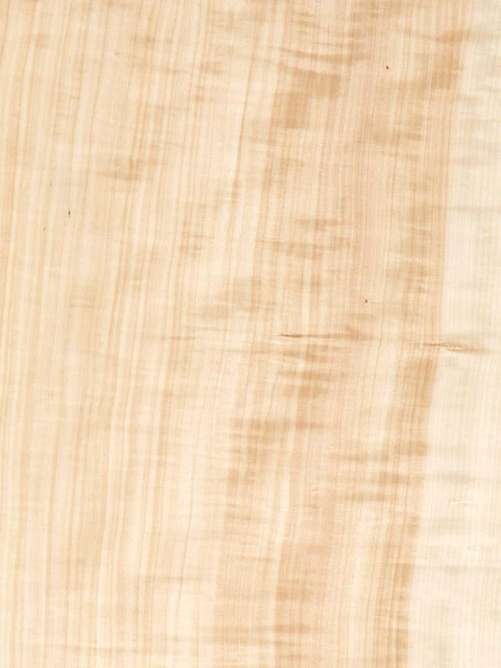 Considered among the best veneers in the poplar family, aspen ranges in color from almost pure white to light straw to warm tan. Favored logs produce a lovely, bright veneer with a beautiful, natural sheen. Aspen is often fumed to a rich, dark brown for use in modern environments. It mixes beautifully with stone and other materials in natural environments. Learn About Veneer Cut & Matching
Considered among the best veneers in the poplar family, aspen ranges in color from almost pure white to light straw to warm tan. Favored logs produce a lovely, bright veneer with a beautiful, natural sheen. Aspen is often fumed to a rich, dark brown for use in modern environments. It mixes beautifully with stone and other materials in natural environments. Learn About Veneer Cut & Matching -
 Considered among the best veneers in the poplar family, aspen ranges in color from almost pure white to light straw to warm tan. Favored logs produce a lovely, bright veneer with a beautiful, natural sheen. Aspen is often fumed to a rich, dark brown for use in modern environments. It mixes beautifully with stone and other materials in natural environments. Learn About Veneer Cut & Matching
Considered among the best veneers in the poplar family, aspen ranges in color from almost pure white to light straw to warm tan. Favored logs produce a lovely, bright veneer with a beautiful, natural sheen. Aspen is often fumed to a rich, dark brown for use in modern environments. It mixes beautifully with stone and other materials in natural environments. Learn About Veneer Cut & Matching -
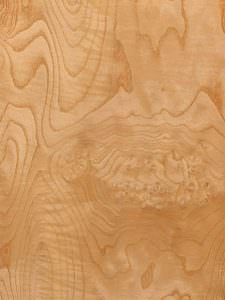 Ancient Norwegians considered a mythological ash tree to be the center of the world. Among the palest colored veneers, ash has a lustrous surface, beautiful straight grain, a light stripe effect, and subtle contrast between its light tan heartwood and creamy sapwood. It produces a wide range of beautiful, shimmering figures and delicate burls. Extremely strong, ash is the lumber of choice for parallel bars, baseball bats and tool handles. In veneer, it’s prized for high-quality furniture and for use in light, open interiors. Learn About Veneer Cut & Matching
Ancient Norwegians considered a mythological ash tree to be the center of the world. Among the palest colored veneers, ash has a lustrous surface, beautiful straight grain, a light stripe effect, and subtle contrast between its light tan heartwood and creamy sapwood. It produces a wide range of beautiful, shimmering figures and delicate burls. Extremely strong, ash is the lumber of choice for parallel bars, baseball bats and tool handles. In veneer, it’s prized for high-quality furniture and for use in light, open interiors. Learn About Veneer Cut & Matching -
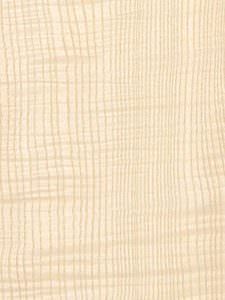 Ancient Norwegians considered a mythological ash tree to be the center of the world. Among the palest colored veneers, ash has a lustrous surface, beautiful straight grain, a light stripe effect, and subtle contrast between its light tan heartwood and creamy sapwood. It produces a wide range of beautiful, shimmering figures and delicate burls. Extremely strong, ash is the lumber of choice for parallel bars, baseball bats and tool handles. In veneer, it’s prized for high-quality furniture and for use in light, open interiors. Learn About Veneer Cut & Matching
Ancient Norwegians considered a mythological ash tree to be the center of the world. Among the palest colored veneers, ash has a lustrous surface, beautiful straight grain, a light stripe effect, and subtle contrast between its light tan heartwood and creamy sapwood. It produces a wide range of beautiful, shimmering figures and delicate burls. Extremely strong, ash is the lumber of choice for parallel bars, baseball bats and tool handles. In veneer, it’s prized for high-quality furniture and for use in light, open interiors. Learn About Veneer Cut & Matching -
 Ancient Norwegians considered a mythological ash tree to be the center of the world. Among the palest colored veneers, ash has a lustrous surface, beautiful straight grain, a light stripe effect, and subtle contrast between its light tan heartwood and creamy sapwood. It produces a wide range of beautiful, shimmering figures and delicate burls. Extremely strong, ash is the lumber of choice for parallel bars, baseball bats and tool handles. In veneer, it’s prized for high-quality furniture and for use in light, open interiors. Learn About Veneer Cut & Matching
Ancient Norwegians considered a mythological ash tree to be the center of the world. Among the palest colored veneers, ash has a lustrous surface, beautiful straight grain, a light stripe effect, and subtle contrast between its light tan heartwood and creamy sapwood. It produces a wide range of beautiful, shimmering figures and delicate burls. Extremely strong, ash is the lumber of choice for parallel bars, baseball bats and tool handles. In veneer, it’s prized for high-quality furniture and for use in light, open interiors. Learn About Veneer Cut & Matching -
 Ancient Norwegians considered a mythological ash tree to be the center of the world. Among the palest colored veneers, ash has a lustrous surface, beautiful straight grain, a light stripe effect, and subtle contrast between its light tan heartwood and creamy sapwood. It produces a wide range of beautiful, shimmering figures and delicate burls. Extremely strong, ash is the lumber of choice for parallel bars, baseball bats and tool handles. In veneer, it’s prized for high-quality furniture and for use in light, open interiors. Learn About Veneer Cut & Matching
Ancient Norwegians considered a mythological ash tree to be the center of the world. Among the palest colored veneers, ash has a lustrous surface, beautiful straight grain, a light stripe effect, and subtle contrast between its light tan heartwood and creamy sapwood. It produces a wide range of beautiful, shimmering figures and delicate burls. Extremely strong, ash is the lumber of choice for parallel bars, baseball bats and tool handles. In veneer, it’s prized for high-quality furniture and for use in light, open interiors. Learn About Veneer Cut & Matching -
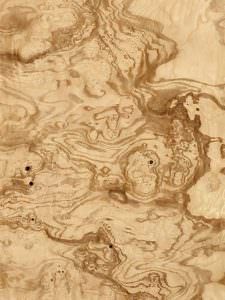 Olive Ash is not a species in itself, rather it’s the name given to veneer cut from the dark heartwood of one of several European ashes. The dark on light stripes is reminiscent of true olive wood. Colors range from white to yellow to brown in varied combinations of color and markings. Grain may be straight, curly, or wavy. Olive ash burl veneer is highly prized for its turbulent markings and striking color contrasts. Learn About Veneer Cut & Matching
Olive Ash is not a species in itself, rather it’s the name given to veneer cut from the dark heartwood of one of several European ashes. The dark on light stripes is reminiscent of true olive wood. Colors range from white to yellow to brown in varied combinations of color and markings. Grain may be straight, curly, or wavy. Olive ash burl veneer is highly prized for its turbulent markings and striking color contrasts. Learn About Veneer Cut & Matching -
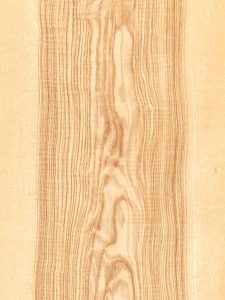 Olive Ash is not a species in itself, rather it’s the name given to veneer cut from the dark heartwood of one of several European ashes. The dark on light stripes is reminiscent of true olive wood. Colors range from white to yellow to brown in varied combinations of color and markings. Grain may be straight, curly, or wavy. Olive ash burl veneer is highly prized for its turbulent markings and striking color contrasts. Learn About Veneer Cut & Matching
Olive Ash is not a species in itself, rather it’s the name given to veneer cut from the dark heartwood of one of several European ashes. The dark on light stripes is reminiscent of true olive wood. Colors range from white to yellow to brown in varied combinations of color and markings. Grain may be straight, curly, or wavy. Olive ash burl veneer is highly prized for its turbulent markings and striking color contrasts. Learn About Veneer Cut & Matching -
 Wenge is striking rich, dark, coffee-colored wood with subtly contrasting, nearly black streaks. Straight grained with a coarse texture and matte finish, wenge produces large leaves well suited for architectural use. This extraordinary wood lends an elegant and exotic appeal to the built environment. Learn About Veneer Cut & Matching
Wenge is striking rich, dark, coffee-colored wood with subtly contrasting, nearly black streaks. Straight grained with a coarse texture and matte finish, wenge produces large leaves well suited for architectural use. This extraordinary wood lends an elegant and exotic appeal to the built environment. Learn About Veneer Cut & Matching

